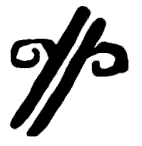 There is available to us online a 30 pp paper by Séamas Ó Catháin entitled "The Festival of Brigit the Holy Woman". Below is a tiny taste of it. Please go to Celtica -- Journal of the School of Celtic Studies, for the full text.
There is available to us online a 30 pp paper by Séamas Ó Catháin entitled "The Festival of Brigit the Holy Woman". Below is a tiny taste of it. Please go to Celtica -- Journal of the School of Celtic Studies, for the full text.
One of the two important Línasa sites linking `the old goddess' and the harvest
festival, to which Mac Neill refers, is Brideswell or Tobar Bhríde in Co. Roscommon.
Like Daigh Bhríde (St Brigid's Well) at Liscannor, Co. Clare and the St
Brigid's Well in the parish of Ballinakill, Co. Galway, it is a Línasa site which
bears the name of the saint whose feast day is celebrated, not in harvest time, but
on the first of February, traditionally the first day of spring in Ireland. In common
with a number of other wells dedicated to St Brigit, Brideswell also exhibits some
highly significant connections with what may be broadly described as `fertility', as
is made clear by the following:
In 1604 Randal MacDonnell, son of Sorley Boy, and afterwards first Earl of
Antrim (1620), married Ailis, daughter of the great Hugh O'Neill, and they
were for a while childless. They made the pilgrimage to Tobar Bhríde and
later, in gratitude, for answered prayer, Randal, now Earl of Antrim, erected a
gateway leading to the well, bearing his arms and date 1625.
Kilbride (Cill Bhríde) near Ballycastle, Co. Mayo also boasts a `St Bridget's
Well' which `is supposed to possess a cure for sterility' and which also happens
to lie in close proximity to yet another major Línasa site. The potential to `cure
sterility' was a feature of the healing powers of a number of holy wells here and there throughout the country. Devotion to St Brigit was, indeed, widespread among
the ordinary people, Finding in later years its most elaborate surviving expression
in the Irish-speaking or recently Irish-speaking parts.
from the paper: Ó Catháin, Séamus. 'The festival of Brigit the Holy Woman'. Celtica, 23 (1999), 231-60. ISSN 0069-1399.
Séamas Ó Catháin

Leagan Gaeilge
English version


4 comments:
What is the symbol used in the post? It looks familiar, but I can't remember what it is called.
Excellent question, Fiachna. What I generally do is take an image from the web page or book (etc) I'm linking to. This image was on the DIAS site but is not there now, so I can't retrace the steps and tell you. Sorry!
It is perfectly alright. :) I am just glad you responded to my question, and am glad to have somewhat of an answer. I will try checking out the website and see if I can try to find a way to retrace the steps myself in some way. lol. What does DIAS stand for so I can look for the website of theirs? :)
DIAS stands for Dublin Institute for Advanced Studies. If you follow the link above you will get to their site. Good luck!
Post a Comment